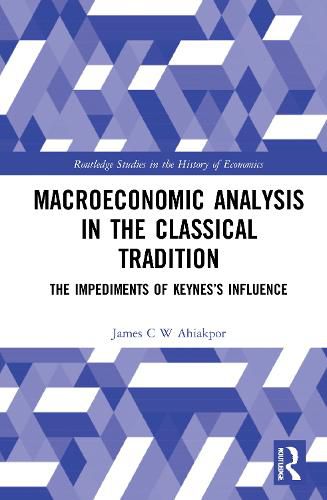Readings Newsletter
Become a Readings Member to make your shopping experience even easier.
Sign in or sign up for free!
You’re not far away from qualifying for FREE standard shipping within Australia
You’ve qualified for FREE standard shipping within Australia
The cart is loading…






Macroeconomic Analysis in the Classical Tradition explains how the influence of Keynes’s macroeconomics, including his changed definitions of some key macroeconomic concepts, has impeded many analysts’ ability to readily resolve disputes in modern macroeconomics.
Expanding on his earlier work-Macroeconomics without the Errors of Keynes (2019)-the author delves into more aspects of macroeconomic theory and argues for a revision of Keynes’s contribution to the field. Attention is given to theories and concepts such as Say’s Law, the quantity theory of money, the liquidity trap, the permanent income hypothesis, 100% money, and the Phillips curve analysis. The chapters work to build a careful critique of Keynes’s economics and make the case that the classical macroeconomics of Smith, Say, Ricardo, Mill, and others could help resolve present-day policy disagreements and redefine macroeconomic priorities.
This book provides essential reading for advanced students and scholars with an interest in the foundations of Keynes’s theories and current debates within macroeconomic policy.
$9.00 standard shipping within Australia
FREE standard shipping within Australia for orders over $100.00
Express & International shipping calculated at checkout
Macroeconomic Analysis in the Classical Tradition explains how the influence of Keynes’s macroeconomics, including his changed definitions of some key macroeconomic concepts, has impeded many analysts’ ability to readily resolve disputes in modern macroeconomics.
Expanding on his earlier work-Macroeconomics without the Errors of Keynes (2019)-the author delves into more aspects of macroeconomic theory and argues for a revision of Keynes’s contribution to the field. Attention is given to theories and concepts such as Say’s Law, the quantity theory of money, the liquidity trap, the permanent income hypothesis, 100% money, and the Phillips curve analysis. The chapters work to build a careful critique of Keynes’s economics and make the case that the classical macroeconomics of Smith, Say, Ricardo, Mill, and others could help resolve present-day policy disagreements and redefine macroeconomic priorities.
This book provides essential reading for advanced students and scholars with an interest in the foundations of Keynes’s theories and current debates within macroeconomic policy.